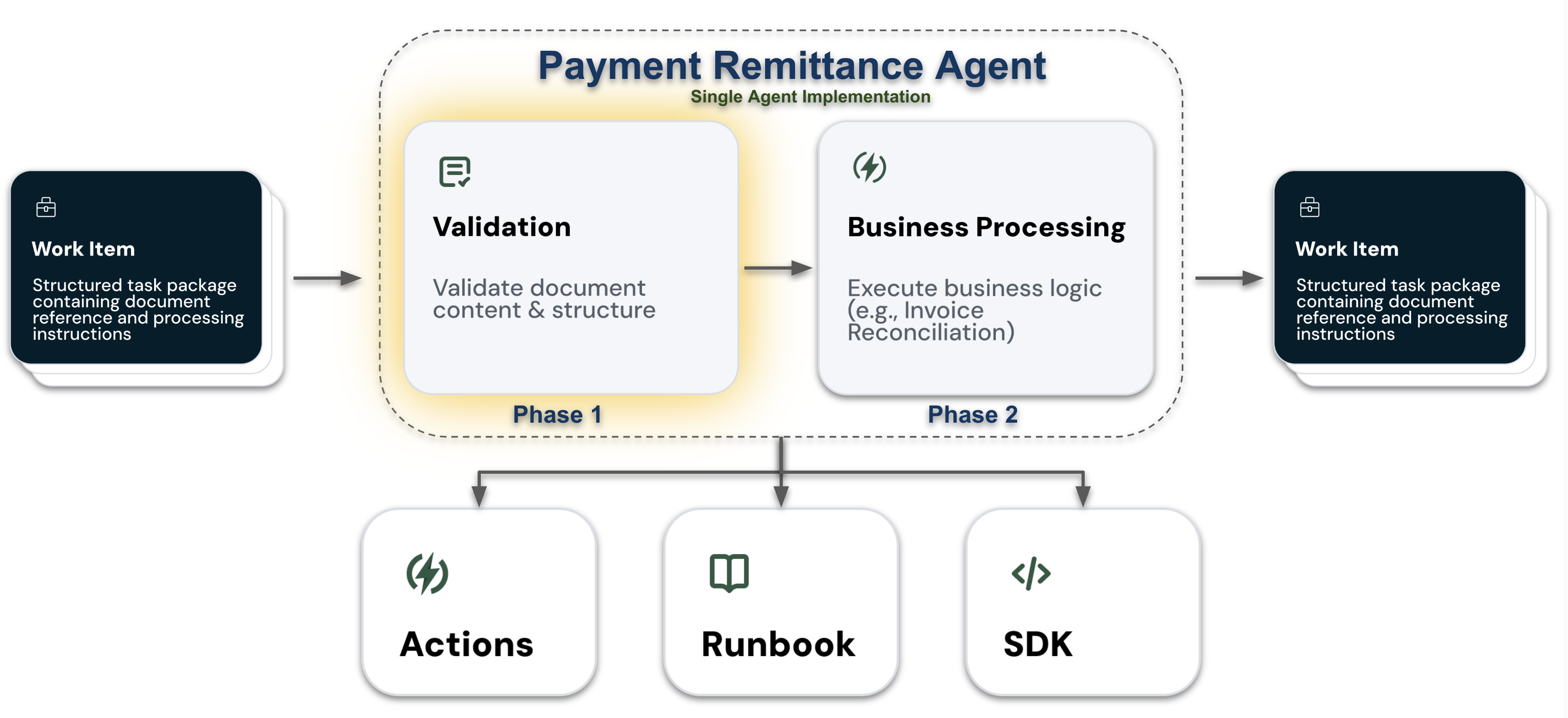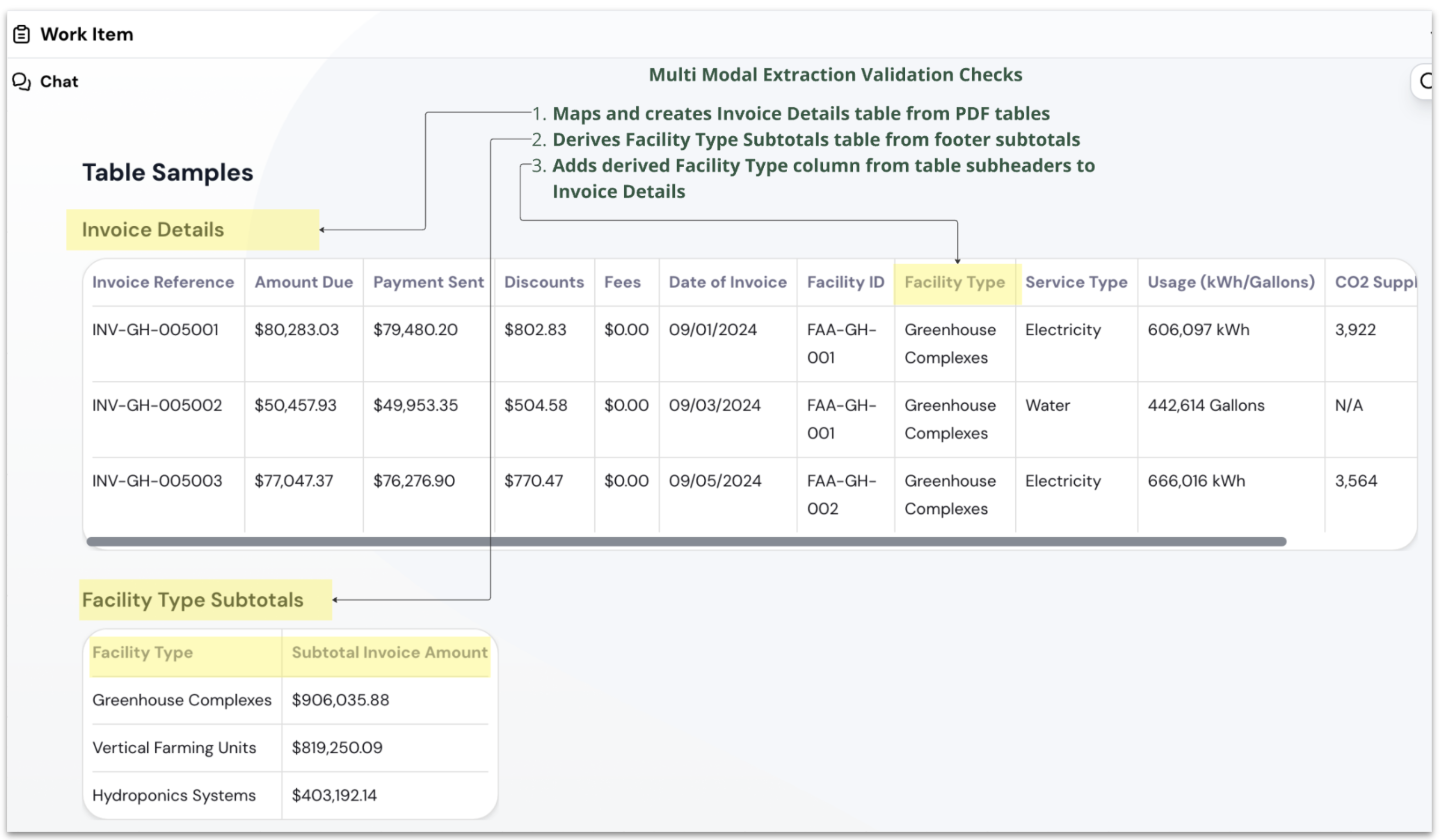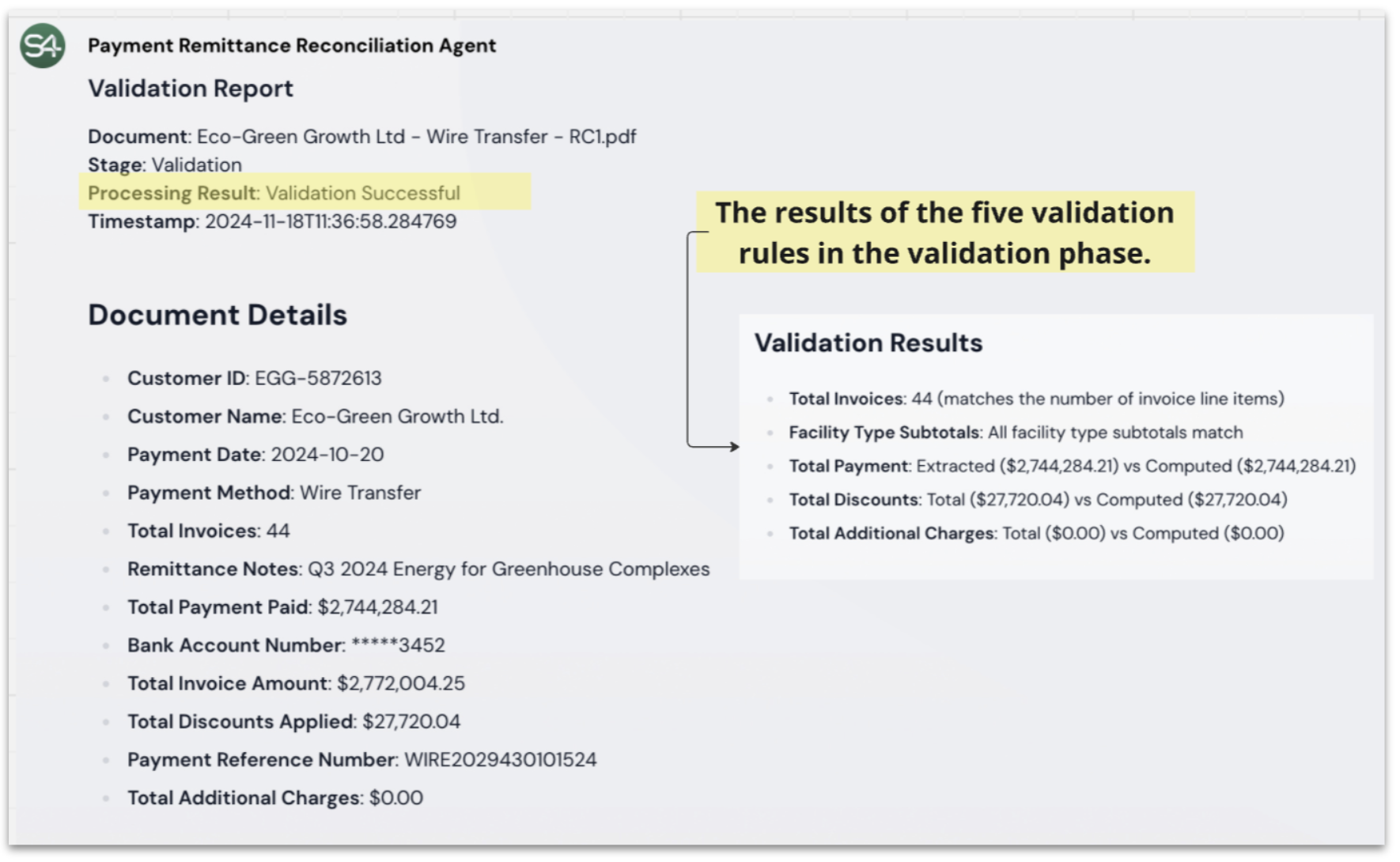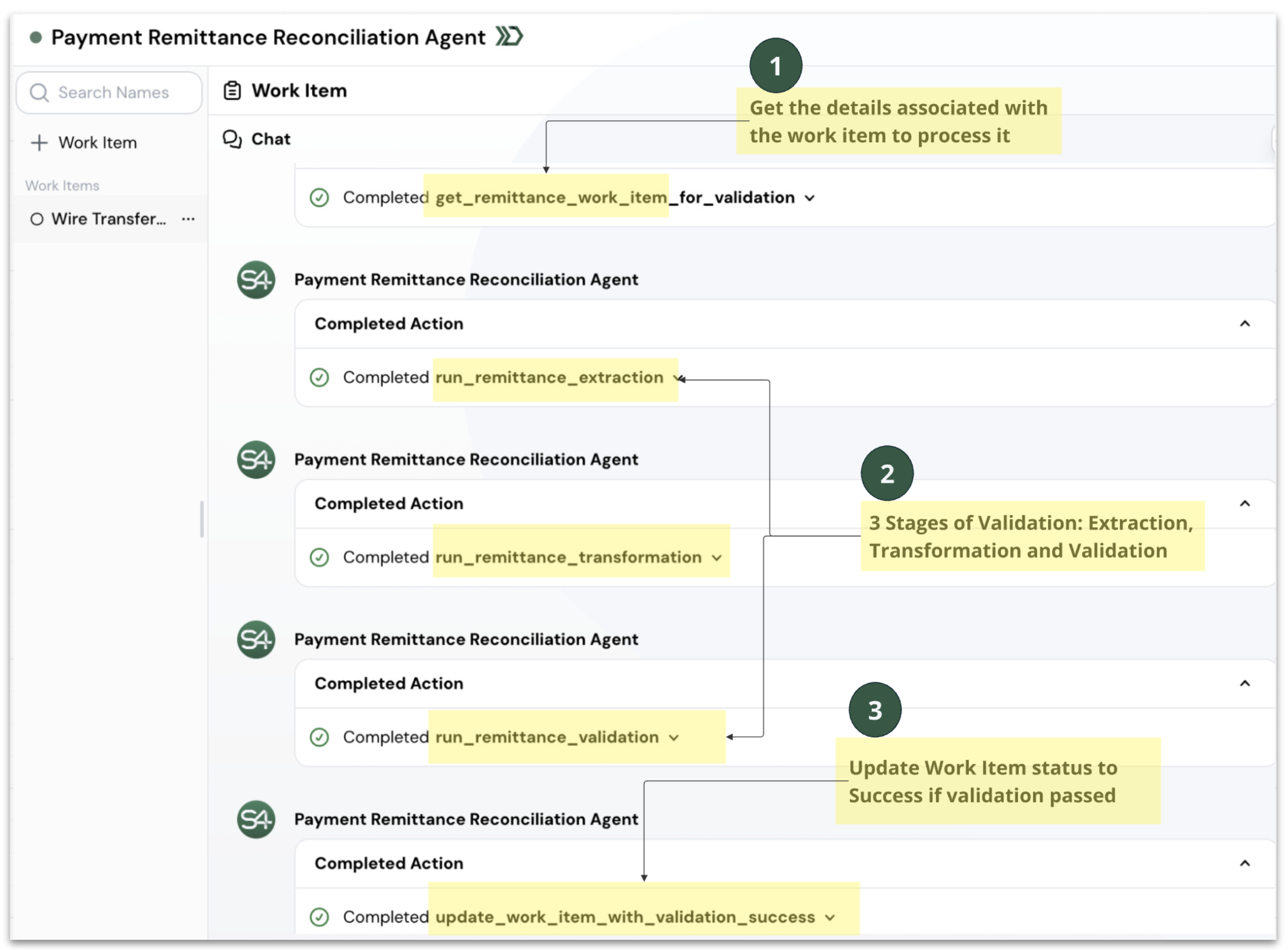Test Worker Agent Document Validation
Worker Agents process documents through two distinct phases to transform unstructured content into business outcomes:
- Validation Phase: Ensures document integrity and data quality
- Processing Phase: Executes business-specific logic on validated data
This separation of concerns enables agents to verify data quality before applying complex business rules. The Payment Remittance Agent demonstrates this pattern through its validation and reconciliation phases.
After creating work items in the previous section, you'll now learn how to systematically test Worker Agent validation processing. Testing this first critical phase is essential before deploying agents to production, as it ensures your agent can reliably verify document integrity and data quality. A robust validation testing strategy helps confirm your agent can autonomously handle standard validation scenarios while intelligently engaging human expertise when validation issues arise.

Using the Payment Remittance Agent as our example, you'll learn testing strategies for Worker Agent validation that verify:
- Document completeness and structure integrity
- Data extraction and transformation accuracy
- Validation rule effectiveness
- Error handling and reporting capabilities
Testing Validation Processing
Let's walk through testing validation processing using our Payment Remittance Agent. We'll use a sample document to demonstrate key validation testing patterns.
1. Create Test Work Item

Create a work item using our sample remittance document:
- Select "Create Work Item" in Studio Worker Room
- Choose
Eco-Green Growth Ltd - Wire Transfer - RC1.pdf - Click "Create" to begin validation processing
This sample document demonstrates standard validation scenarios enabling us to verify extraction accuracy, data transformation, and validation rule execution.
2. Verify Table Data Structure

The Worker Agent can display extracted data in tabular format by simply communicating that in natural language in the Runbook, providing a powerful way to verify the Multi-modal Extraction Service's accuracy:
Verify key aspects of table extraction:
- Complete row/column structure
- Proper header mapping
- Correct data type conversion
- Preserved relationships
The ability to flexibly view extracted data in different formats helps quickly identify any extraction issues before validation rules are applied.
3. Analyze Validation Report

Review the comprehensive validation report generated by the agent:
Document Details
Document: Eco-Green Growth Ltd - Wire Transfer - RC1.pdf
Customer: Eco-Green Growth Ltd
Payment Method: Wire Transfer
Total Amount: $2,636,905.41Validation Results
Validation Summary:
✓ Invoice Count: 44 matched
✓ Facility Subtotals: All reconciled
✓ Payment Total: Within threshold
✓ Field Relationships: Valid
Overall: 16/16 checks passedThe validation report serves as both testing evidence and audit trail, documenting exactly how the agent validated document integrity.
4. Review Validation Processing Steps

Monitor how the agent executes the validation pipeline:
- Document retrieval and assessment
- Extraction and structuring
- Data transformation and enrichment
- Validation rule execution
- Report generation
Verify each stage completes successfully before proceeding to the next.
Designing Document Validation
Testing the validation phase focuses on verifying if your Worker Agent can accurately detect document integrity issues and data quality problems. Effective validation ensures your agent has reliable data before applying business logic in the processing phase.
Good validation testing focuses on document internal consistency without requiring external data sources. If your validation needs external data, it's likely a business rule that belongs in the processing phase.
Common Validation Rules
While specific validation rules vary by use case, certain patterns are common across many Worker Agent implementations:
When designing your validation phase:
- Start by identifying which of these common patterns apply to your use case
- Define specific validation rules for each applicable pattern
- Determine what data transformations are needed to support these validations
Building Your Validation Pipeline
Identifying your validation rules upfront and planning the necessary data transformations enables you to design an effective validation pipeline. This best practice ensures your pipeline stages are properly structured to support your validation requirements.
Validation Pipeline Stages

Best Practices for Validation Testing
Building on what we learned from our hands-on testing, here are key practices for implementing robust validation:
Next Steps
Now that you've verified your agent's validation processing, continue to Test Worker Agent Business Processing to learn how to test business rule application and external system integration.
Always complete validation testing before proceeding to business processing testing. Reliable validation ensures your business processing starts with trustworthy data.